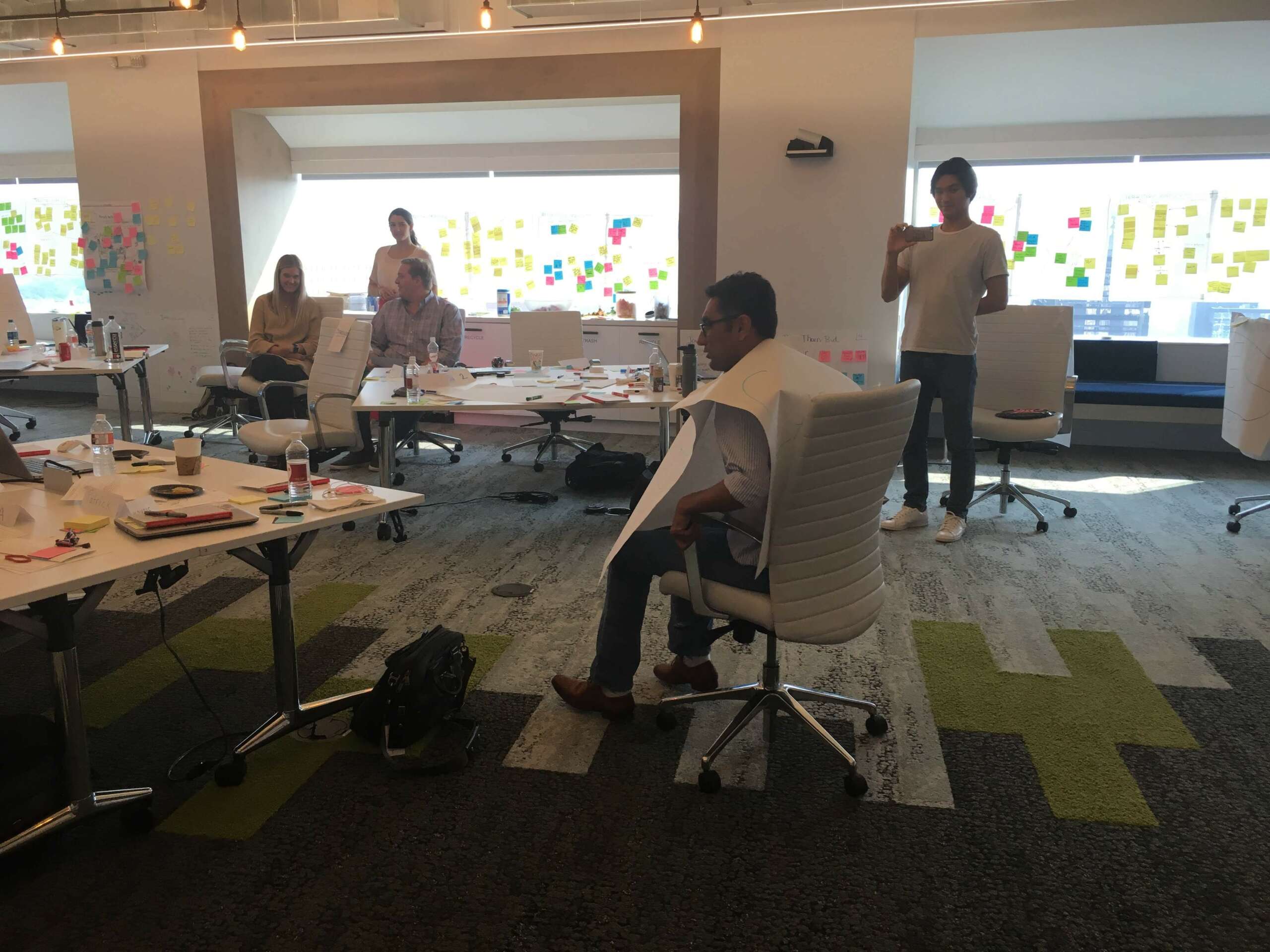We were lucky to catch up with Elizabeth Peaslee recently and have shared our conversation below.
Elizabeth, thanks for taking the time to share your stories with us today Can you recount a story of an unexpected problem you’ve faced along the way?
Covid turned the world upside down for nearly everyone, but for me, it meant reimagining a business that had been built on in-person interactions (observational research, teaching, and facilitation). In hindsight, it has allowed me to serve clients in new ways that better meet their needs and also to help them at a time in which they felt ill-equipped to collaborate.
My consulting practice has always been focused on helping companies better understand the experience they create for customers through the use of primary observational research. When being in-person for research was no longer an option, I had to develop new ways of conducing that research remotely, while not diminishing the impact of the learnings. I developed new twists on familiar techniques to enable me to continue to conduct insightful research, including that on digital / mobile experiences, even thought I could no longer physically look “over the shoulder” of the participants. In the process, I was able to help clients see the value of doing research with geographically dispersed participants at lower cost than our previous in-person work in a central location. I’m now able to do more research for clients for the same cost, which is a win for everyone.
One thing I didn’t expect to have happen as a result of the pandemic was to have an entirely new service offering emerge in the form of remote facilitated design workshops. As it turned out, pulling people out of their offices and away from their conference room whiteboards made them very uncomfortable and feeling like they could no longer effectively collaborate with their teams. People started hearing about my skills as a human-centered designer and workshop facilitator and my familiarity with digital whiteboard tools (Mural, Miro) and started reaching out to ask if I could help them. Had it not been for the pandemic forcing us all into remote work, it’s possible this need and new service offering would have never materialized.
As always, we appreciate you sharing your insights and we’ve got a few more questions for you, but before we get to all of that can you take a minute to introduce yourself and give our readers some of your back background and context?
Elizabeth Peaslee is an evangelist for innovation through human-centered design. She has been a practitioner of human-centered design methods for more than 20 years and is passionate about raising awareness of the power of design thinking through her strategic research, facilitation, and education work.
Elizabeth is the founder and Chief Experience Officer of LumosCX, an experience design consultancy. She takes a disciplined approach to product and service innovation, helping clients embrace people-focused discovery and problem framing to inform impactful solutioning. She is recognized for building strong relationships and for delivering actionable recommendations that drive key business metrics. She also facilitates in-person and remote working sessions for teams that want to avoid internal biases and be challenged to think differently.
Since 2004, Elizabeth has been moderating a council of product and technology executives for Collaborative Gain, a community for leaders passionate about building better, more customer (and employee) centric companies. Convening twice a year for multi-day retreats, and monthly for virtual meetups, Elizabeth develops member-driven agendas that foster an environment of trust and sharing, where leaders can learn from and support each other in leading innovation efforts in their organizations.
Since 2015, Elizabeth has been a certified Lead Instructor for LUMA Institute, a Mural company, teaching and coaching hundreds of teams as they develop internal design thinking skills to accelerate innovation.
Prior to founding her company, Elizabeth spent 8 years at Travelocity (formerly a Sabre company), where she established and led the Product and Customer & User Experience disciplines, her first roles in which she got to geek out on making unnecessarily difficult things easier for people.
Elizabeth began her career at Sanford Bernstein (now part of AllianceBernstein) as a portfolio manager and research analyst. She earned an MBA from the Ross School of Business at the University of Michigan, and a Bachelor’s in Economics and Mathematics from Duke University, which feel miles away from human-centered design, but established her drive for life-long learning.
Any advice for growing your clientele? What’s been most effective for you?
The most effective strategy for growing your client base is simple: do good work and be a good human. In a niche (growing, but still niche) specialty like experience and service design, many people don’t know what they are looking for, but they know what problem they are trying to solve. When people reach out to their network to ask “do you know anybody who can help with X?” you want to have clients eager to step forward and sing your praises, and that comes entirely from the quality of work you deliver and being a decent human to work with.
What’s been the best source of new clients for you?
Related to the above about glowing clientele, my best sources for new clients are based on doing good work. The first source is word of mouth… people sharing my name with others when they learn they have a need for strategic work and a desire to be human-centered about that work. The other comes when my existing clients get new jobs… good product leaders are always looking for their next challenge, so there there is a lot of job movement in the digital product space, and when a client gets hired into a new organization that is trying to fix their customer experience, they let me know to expect a call.
Contact Info:
- Website: elizabethpeaslee.com (portfolio site) and lumoscx.com (consulting business site)
- Linkedin: www.linkedin.com/in/elizabethpeaslee




